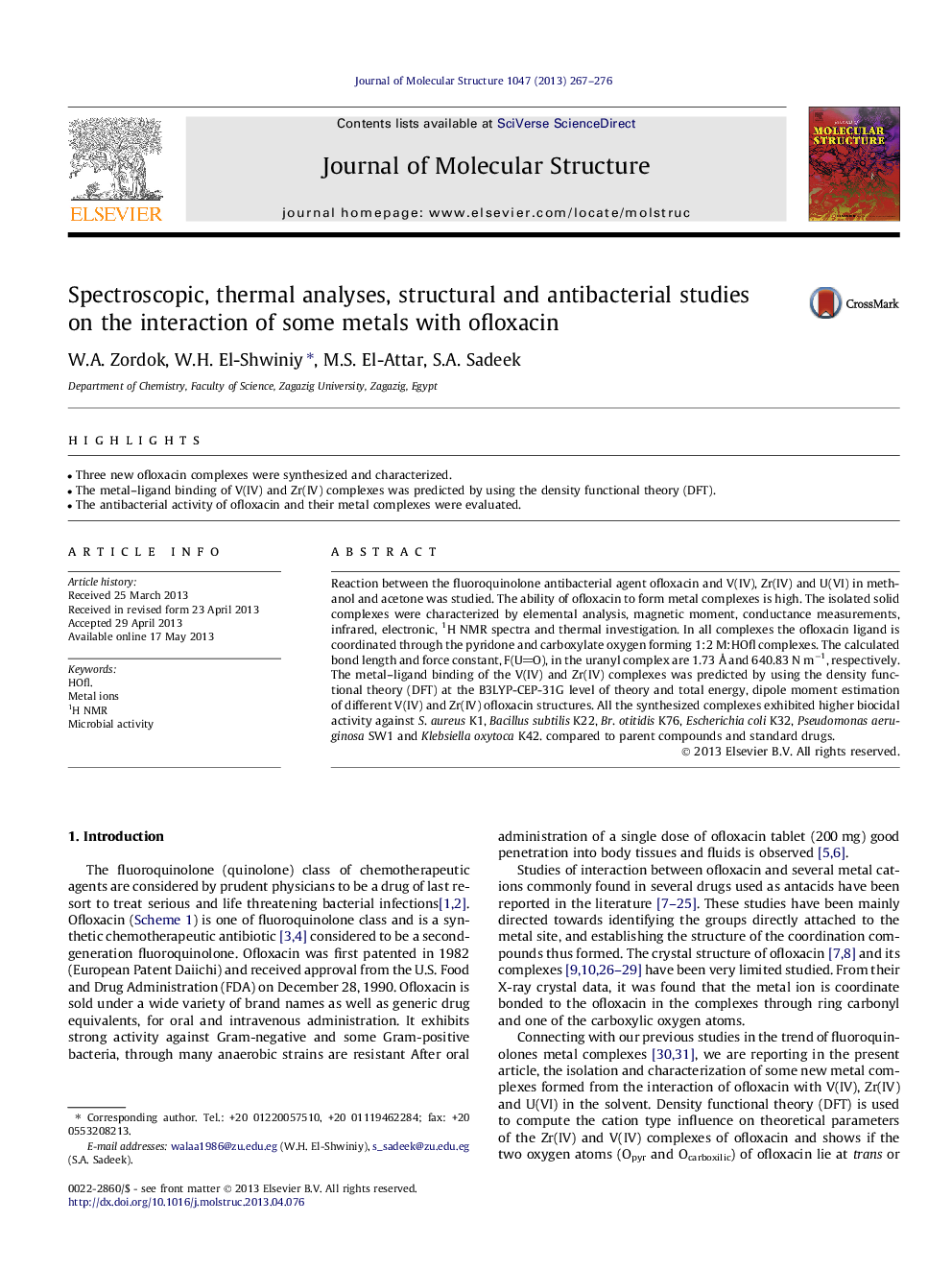| Article ID | Journal | Published Year | Pages | File Type |
|---|---|---|---|---|
| 7810840 | Journal of Molecular Structure | 2013 | 10 Pages |
Abstract
Reaction between the fluoroquinolone antibacterial agent ofloxacin and V(IV), Zr(IV) and U(VI) in methanol and acetone was studied. The ability of ofloxacin to form metal complexes is high. The isolated solid complexes were characterized by elemental analysis, magnetic moment, conductance measurements, infrared, electronic, 1H NMR spectra and thermal investigation. In all complexes the ofloxacin ligand is coordinated through the pyridone and carboxylate oxygen forming 1:2Â M:HOfl complexes. The calculated bond length and force constant, F(UO), in the uranyl complex are 1.73Â Ã
and 640.83Â NÂ mâ1, respectively. The metal-ligand binding of the V(IV) and Zr(IV) complexes was predicted by using the density functional theory (DFT) at the B3LYP-CEP-31G level of theory and total energy, dipole moment estimation of different V(IV) and Zr(IV) ofloxacin structures. All the synthesized complexes exhibited higher biocidal activity against S. aureus K1, Bacillus subtilis K22, Br. otitidis K76, Escherichia coli K32, Pseudomonas aeruginosa SW1 and Klebsiella oxytoca K42. compared to parent compounds and standard drugs.
Keywords
Related Topics
Physical Sciences and Engineering
Chemistry
Organic Chemistry
Authors
W.A. Zordok, W.H. El-Shwiniy, M.S. El-Attar, S.A. Sadeek,
